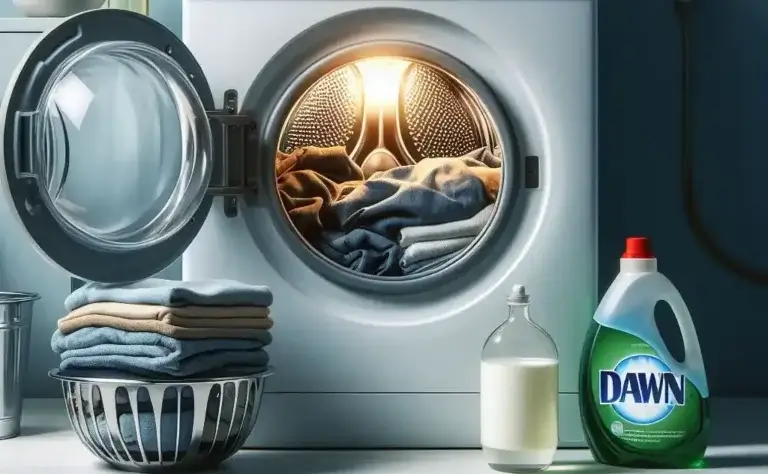How to Safely Washing Clothes with Fiberglass: Get Fiberglass Out of Clothes
Ah, fiberglass. The versatile material that keeps our homes warm and our boats afloat can become a real nuisance when it comes to clothing. Those tiny, sharp fibers are notorious for causing itchy discomfort and skin irritation. But fear not, brave laundry warriors! With the right approach, you can banish these fiberglass foes and reclaim your itch-free comfort.
Table of Contents
Understanding the Fiberglass Threat:
What is Fiberglass?
Fiberglass is a composite material made of fine, glass-like fibers embedded in a resin binder. While incredibly strong and versatile, these fibers can easily penetrate clothing and irritate the skin.
Exposure Hazards
Contact with fiberglass can cause various skin reactions, including:
- Itching and stinging: This is the most common symptom, often accompanied by redness and irritation.
- Rash: Prolonged exposure or sensitive skin may lead to a red, bumpy rash.
- Burning sensation: In severe cases, the skin may experience a burning or prickling sensation.
Minimizing Exposure
After working with fiberglass, take precautions to minimize exposure:
- Remove clothing carefully: Change clothes outdoors or in a well-ventilated area to avoid spreading fibers.
- Dispose of heavily contaminated items: Follow local regulations for hazardous waste disposal.
- Wash exposed clothes separately: Prevent cross-contamination by washing fiberglass-contaminated clothes in isolation.
Prepping for the Washing War:
Before unleashing the washing machine’s power, it’s crucial to prepare your troops. This involves removing as much loose fiberglass as possible to minimize further embedding during the wash cycle.
Banishing the Bulk of Fiberglass:
- Duct Tape: This is your first line of defense. Apply it liberally to affected areas, pressing gently to capture loose fibers. Peel slowly to remove the trapped fiberglass.
- Lint Rollers: These are effective for grabbing loose fibers on smooth surfaces like denim or nylon.
- Vacuum Cleaner: Use the hose attachment with a brush head to suction up loose fibers from fabric surfaces. Avoid using the main vacuum cleaner to prevent spreading fibers throughout the machine. Important Note: Avoid using brushes, as they can inadvertently push the fibers deeper into the fabric, making them even more difficult to remove.
Separating the Squad:
Now that you’ve banished the bulk, prevent further contamination by washing fiberglass-contaminated clothes in isolation. This is crucial to ensure the fiberglass doesn’t spread to other garments in your laundry pile.
How to Safely Washing Clothes with Fiberglass

Fiberglass can be irritating to the skin, so handling clothes that have been exposed to it requires some precautions. Here’s how to safely wash clothes with fiberglass:
Preparation:
- Wash Separately: Never wash clothes with fiberglass contamination along with other clothes. This can spread the fibers to other garments.
- Outdoor Pre-Cleaning (Optional): If possible, take the clothes outside and shake them vigorously to remove loose fiberglass particles. Be mindful of the wind direction to avoid spreading dust. Wear gloves and a mask while doing this.
Washing:
- Standard Wash Cycle: Use your regular laundry detergent and wash the clothes on a normal cycle with warm water.
- Multiple Rinses: Run an extra rinse cycle or two after the initial wash to ensure thorough removal of fiberglass particles.
- Check Care Label: Always refer to the care label on the clothes for specific washing instructions to avoid damaging the fabric.
Additional Tips:
- HEPA Vacuum: After washing, use a vacuum cleaner with a HEPA filter to clean the inside of the washing machine and the surrounding area. This will help remove any remaining fiberglass dust.
- Double or Triple Wash: For heavily contaminated clothes, consider washing them two or three times to ensure complete removal of fiberglass.
- Vinegar (Optional): Some sources suggest adding a cup of white vinegar to the rinse cycle to help loosen and remove fiberglass particles. However, this may not be suitable for all fabrics, so test it on a small inconspicuous area first.
Washing Away the Woes: Choosing the Right Settings

With the preparation complete, it’s time to choose the right settings for the washing machine:
- Water Temperature: Warm water (around 104°F/40°C) is ideal. Hot water can damage delicate fabrics and potentially set stubborn fiberglass fibers.
- Detergent: Use your regular laundry detergent. Avoid harsh bleaches or abrasive cleaners as they can damage fabrics.
- Fabric Softener: Skip the fabric softener! It can coat the fibers, making them stick to the fabric and harder to remove.
- Wash Cycle: Choose a gentle or delicate wash cycle to minimize agitation, which can further embed the fibers.
- Rinse Cycle: Double or triple the rinse cycle to ensure thorough removal of any remaining fiberglass particles.
Drying Dilemma: Air Drying is Key:
After a successful washing battle, consider the drying strategy:
- Air Drying is the Best Option: Hang the clothes outdoors or in a well-ventilated area to allow them to dry naturally. This minimizes the risk of further embedding fiberglass if the heat melts it onto the fabric.
- If Using a Dryer:
- Clean the lint trap thoroughly after drying the fiberglass-contaminated clothes.
- Use the lowest heat setting possible. Avoid high heat settings, as they can melt the fiberglass onto the fabric, making it virtually impossible to remove.
Table: Summary of Fiberglass Removal Methods:
| Method | Description | Advantages | Disadvantages |
|---|---|---|---|
| Duct Tape | Apply and peel to capture loose fibers. | Effective for most fabrics, easy to use. | May not remove deeply embedded fibers. |
| Lint Roller | Use on smooth surfaces to grab loose fibers. | Gentle on fabrics, readily available. | May not be effective on textured fabrics or deeply embedded fibers. |
| Vacuum Cleaner | Use the hose attachment with a brush head to suction up loose fibers. | Effective for large areas, removes deeply embedded fibers. | Requires caution to avoid spreading fibers through the vacuum cleaner. |
| Washing with Warm Water | Wash clothes in warm water (104°F/40°C) with detergent and extra rinse cycles. | Thoroughly removes loose and embedded fibers, safe for most fabrics. | Requires |
Frequently Asked Questions (FAQs):
Q: Can I use vinegar to remove fiberglass?
While vinegar can dissolve some types of fiberglass resin, it’s not generally recommended for clothing. The effectiveness can vary depending on the type of fiberglass, and vinegar might damage delicate fabrics. If you must consider using vinegar, test it on a small, inconspicuous area of the garment first to check for colorfastness and fabric compatibility.
Q: Is it safe to wash clothes with fiberglass multiple times?
Absolutely! Multiple washes with extra rinse cycles are highly encouraged. This approach significantly increases the chances of removing all the hidden fiberglass particles, ensuring your comfort and preventing future irritation.
Q: What if I still feel itchy after washing the clothes?
If you experience persistent itching even after washing, discontinue wearing the clothes immediately. It’s crucial to consult a healthcare professional to rule out any allergic reactions or skin sensitivities related to fiberglass exposure. They can advise on appropriate treatment options for persistent symptoms.
Additional Tips:
- Invest in fiberglass-specific workwear: Wearing disposable coveralls or protective clothing while working with fiberglass can significantly reduce exposure and contamination of your regular garments.
- Wash hands thoroughly: After removing contaminated clothing, wash your hands thoroughly with soap and warm water to prevent spreading fiberglass to other areas of your body or to other people.
- Consider professional cleaning: For heavily contaminated or delicate garments, consider seeking professional cleaning services that specialize in handling fiberglass. They may have specialized equipment and techniques to ensure thorough removal of fibers without damaging the fabric.
Conclusion:
Battling fiberglass on your clothes may seem daunting, but with the right knowledge and approach, you can conquer these tiny terrors and reclaim your itch-free comfort. Remember, caution and following the proper procedures are key to minimizing exposure and maximizing safety. So, the next time you encounter fiberglass, arm yourself with this guide and confidently wage war on those pesky fibers!








